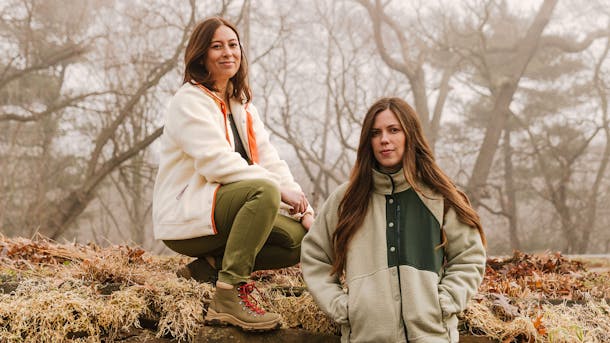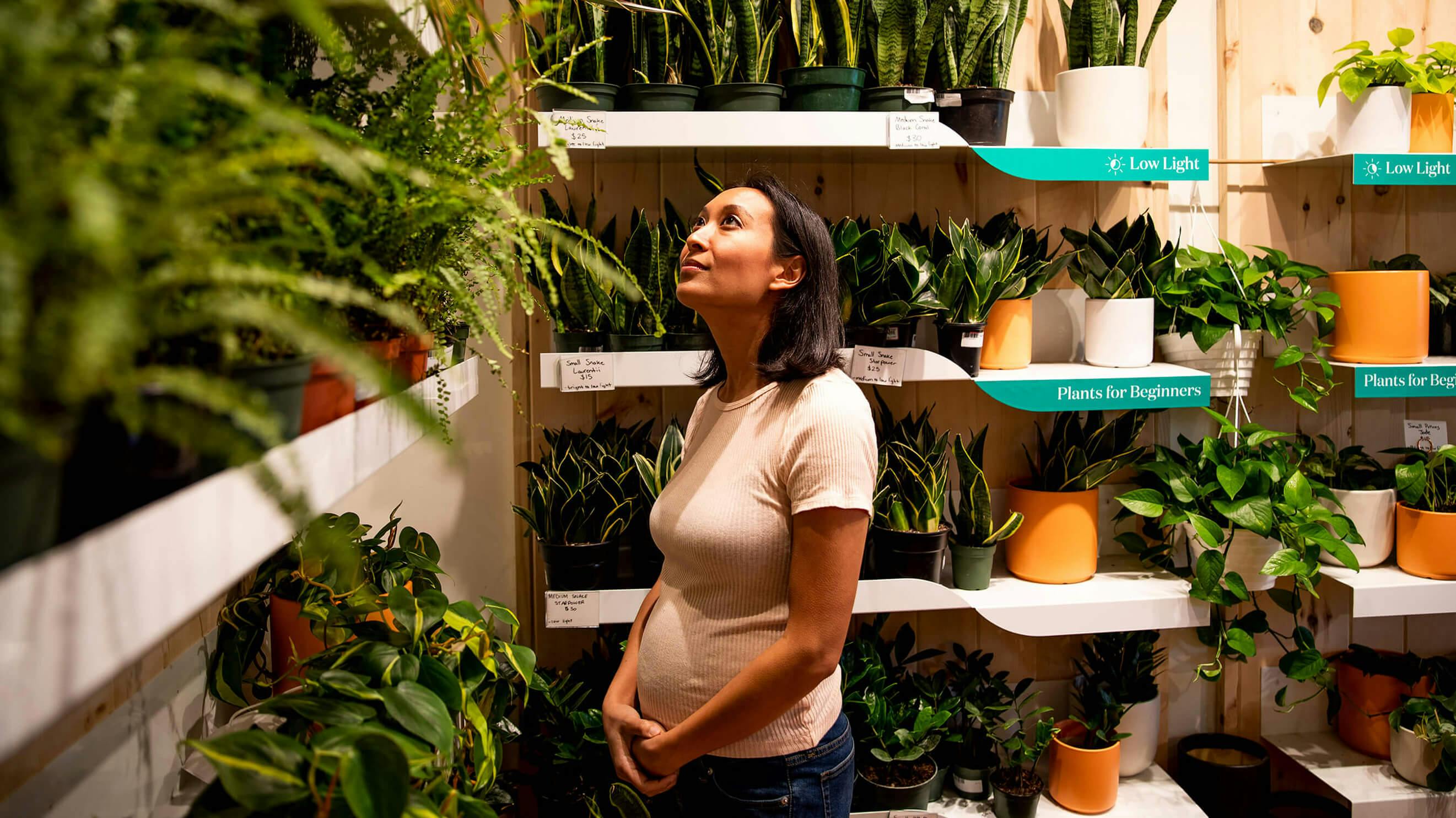
Photo Story
Business is blooming: A lush look inside The Sill's new storefront
Founder and CEO Eliza Blank reflects on 10 years of growing a business that delivers on its mission: to reconnect people with nature, no matter where they live and work.
On a bustling corner in Brooklyn’s Park Slope neighborhood lies a magical place, part coffeeshop and part plant shop, where you can pop in for both a latte and a fiddle leaf fig — a concept that, frankly, makes almost too much sense. The Sill provides the greenery, Blank Street Coffee brings the caffeine, and the dreamy collaboration marks the ninth store opening for The Sill to date.
For Eliza Blank, The Sill started as an idea — rooted in a childhood spent surrounded by plants in rural New England and an early adulthood spent trying to find plants that would stay alive in her New York City apartment. That idea became a Kickstarter campaign, then a bootstrapped online business with a thriving customer base. Now, Eliza finds herself at the helm of an iconic multimillion-dollar brand with nine storefronts coast to coast.
Take a tour through this newest addition to The Sill’s roster, and hear from Eliza about how she’s managed to stay laser-focused on her mission to reconnect more people with nature through a decade of personal and professional growth.
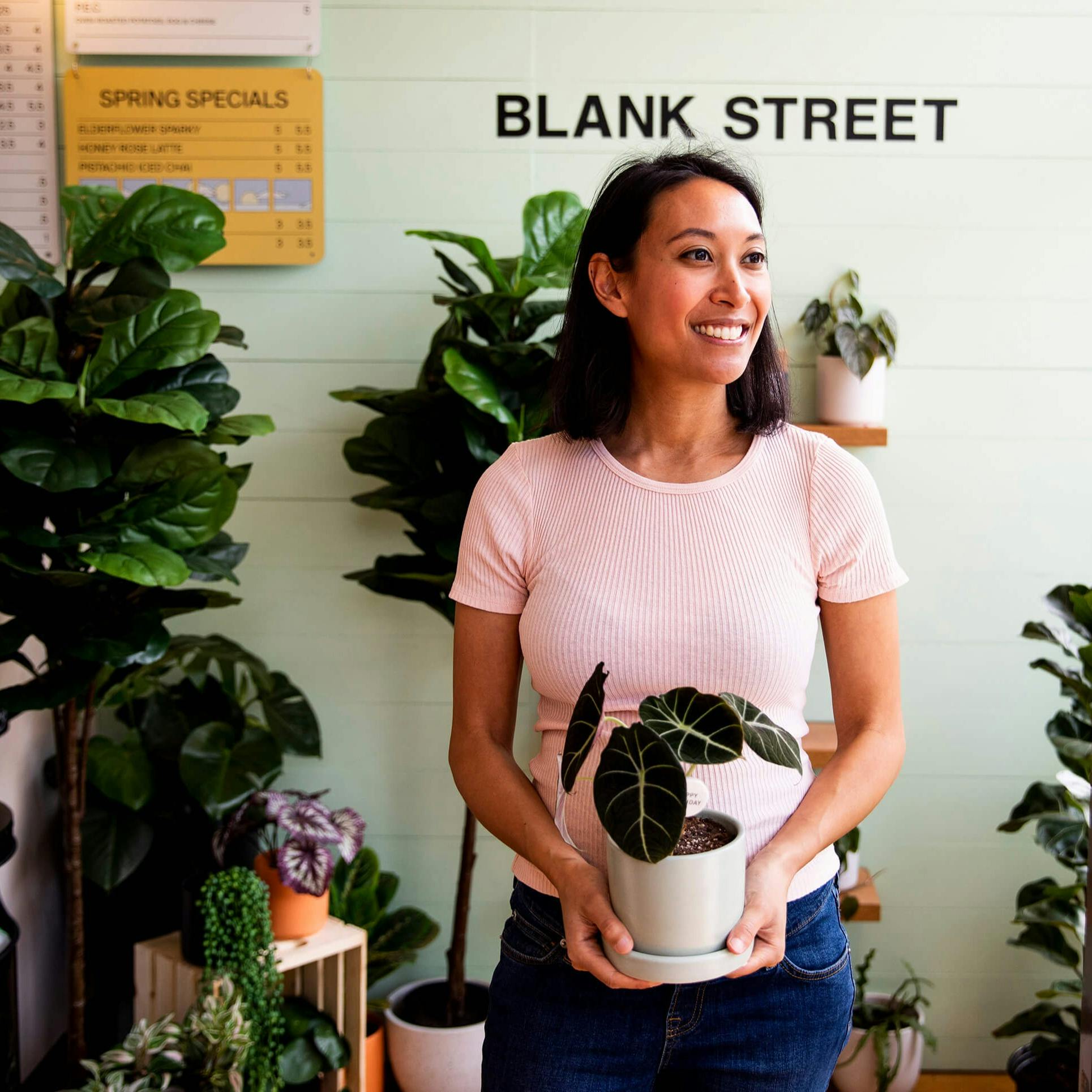
I started the business 10 years ago when I was 26 years old. All my major life events have taken place since starting The Sill, and I've cherished every stage of this business and what we've built.
I grew up in western Massachusetts. My mother — who's from the Philippines and ended up in Massachusetts — has been a career-long nurse and was always an avid gardener. Gardening is her safe space and her therapy. But Massachusetts is freaking cold, so a lot of her gardening would happen inside during the winter months (which is most of the months in New England).
So I grew up with tons of plants around me and totally took it for granted, as most children do. When I moved to New York City to attend NYU, I realized how much nature really mattered to me. My college roommate was from a beautiful part of Michigan, and the two of us would walk from Washington Square Park all the way through midtown to Central Park, just to lay in grass. That was my first realization that nature had an impact on me in some material way.

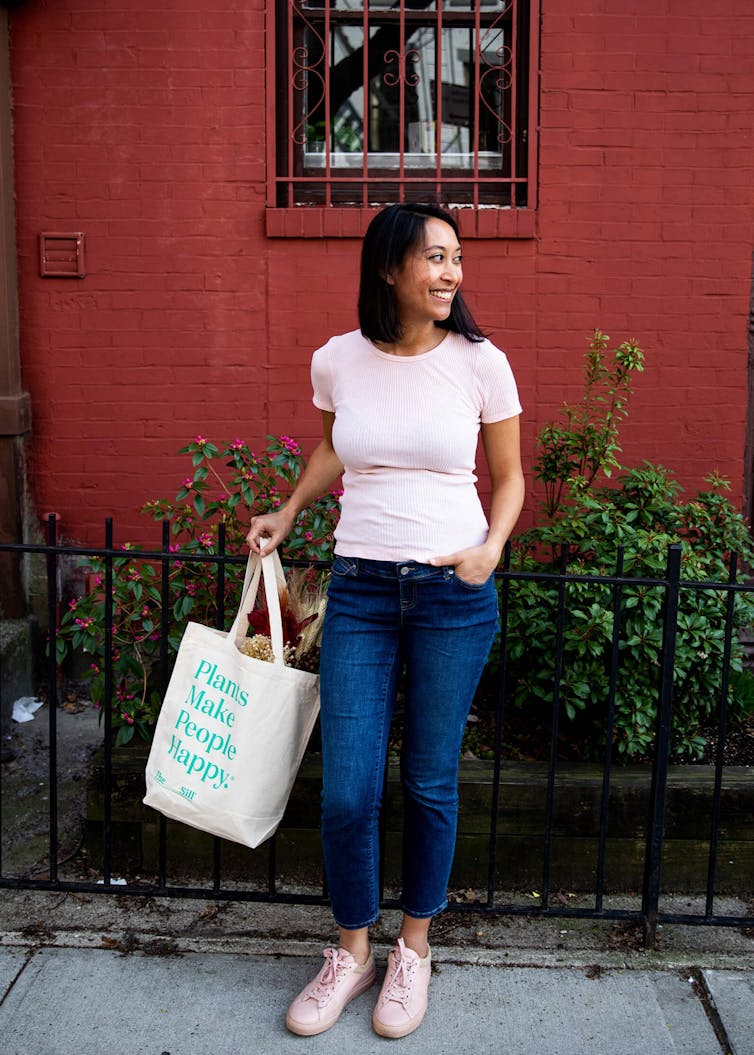
I started to purchase plants on my own. I was buying them at the grocery store and at the one Home Depot in New York City, where all the plants are kept in the basement. I was getting plants in one place, potting soil in another, and the pots in yet a third place. Then I'd bring it all home to my teeny, tiny apartment — which had windows that faced a brick wall. And they died because I didn't know the right plants to choose. I didn't know the right way to care for them, because how you care for plants in New York city is very different than how you care for them in the suburbs.
All of this had me stirred up, and while I started my career in brand strategy, I began to wonder: Why isn't there a consumer brand for plants? A brand that would not only simplify and modernize the category and answer all the questions I had (which was every single question: Where do I get them? What do I do once I get them? How do I take care of them? Who am I supposed to turn to for plant help?) — but also to fill a true need I only realized once I knew what it was like to be an adult.
So I thought, how do I make something accessible and fun and modern and beautiful? But how do I also create it with the mission of actually reconnecting people with nature? Because that is ultimately what matters most. I think I articulate that more clearly today than I did when I started the business.
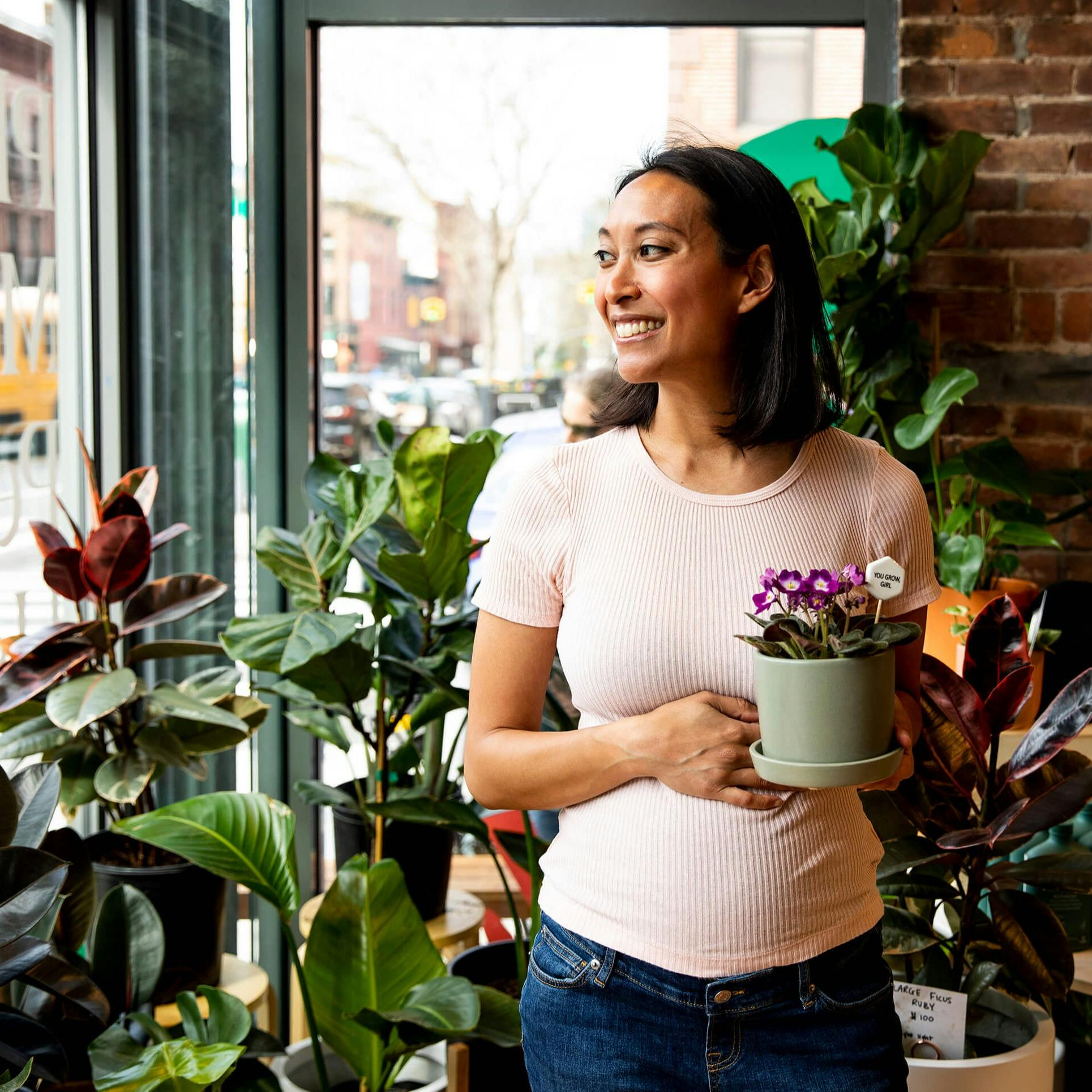
Ten years later, we are still delivering on our mission to reconnect people with nature.
Not only have we introduced so many more people to plants who I don't think would have been interested otherwise, but they're sticking around. They've dabbled and now they're hooked. And that's a wonderful thing to have created.
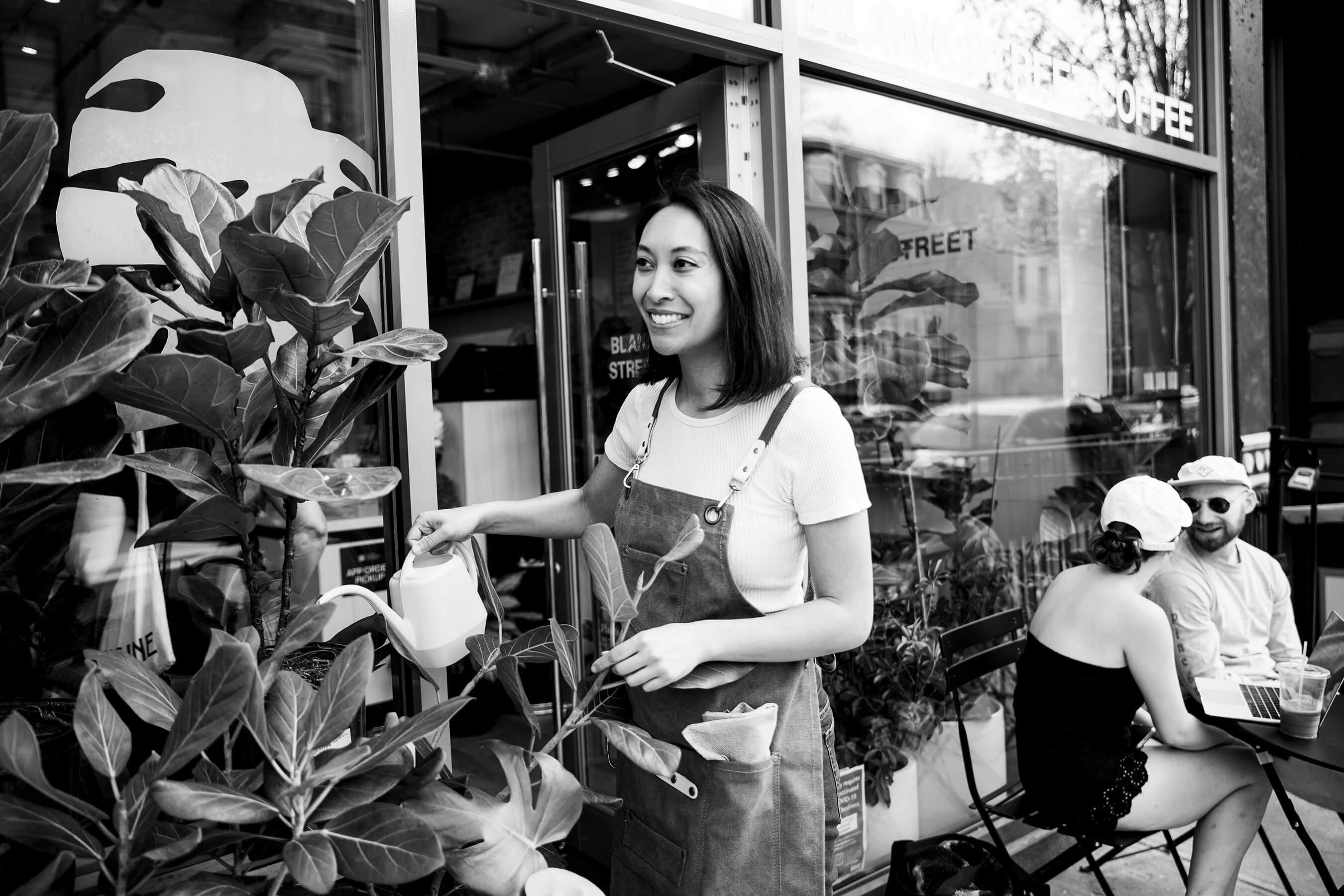
Plants make us happy: It’s in our DNA
I love plants. They're my meditation. I don't have a strong meditation practice, but I have a strong plant game. One of the fun things about having a lot of plants is that it’s an activity that requires you to put your phone down and be observant. It engages all your senses. Similar to how my mother feels, I find it very therapeutic.
Plus, they look good. It's a relatively inexpensive way to decorate and it truly brings a space to life. The feeling of a room completely changes with plants.
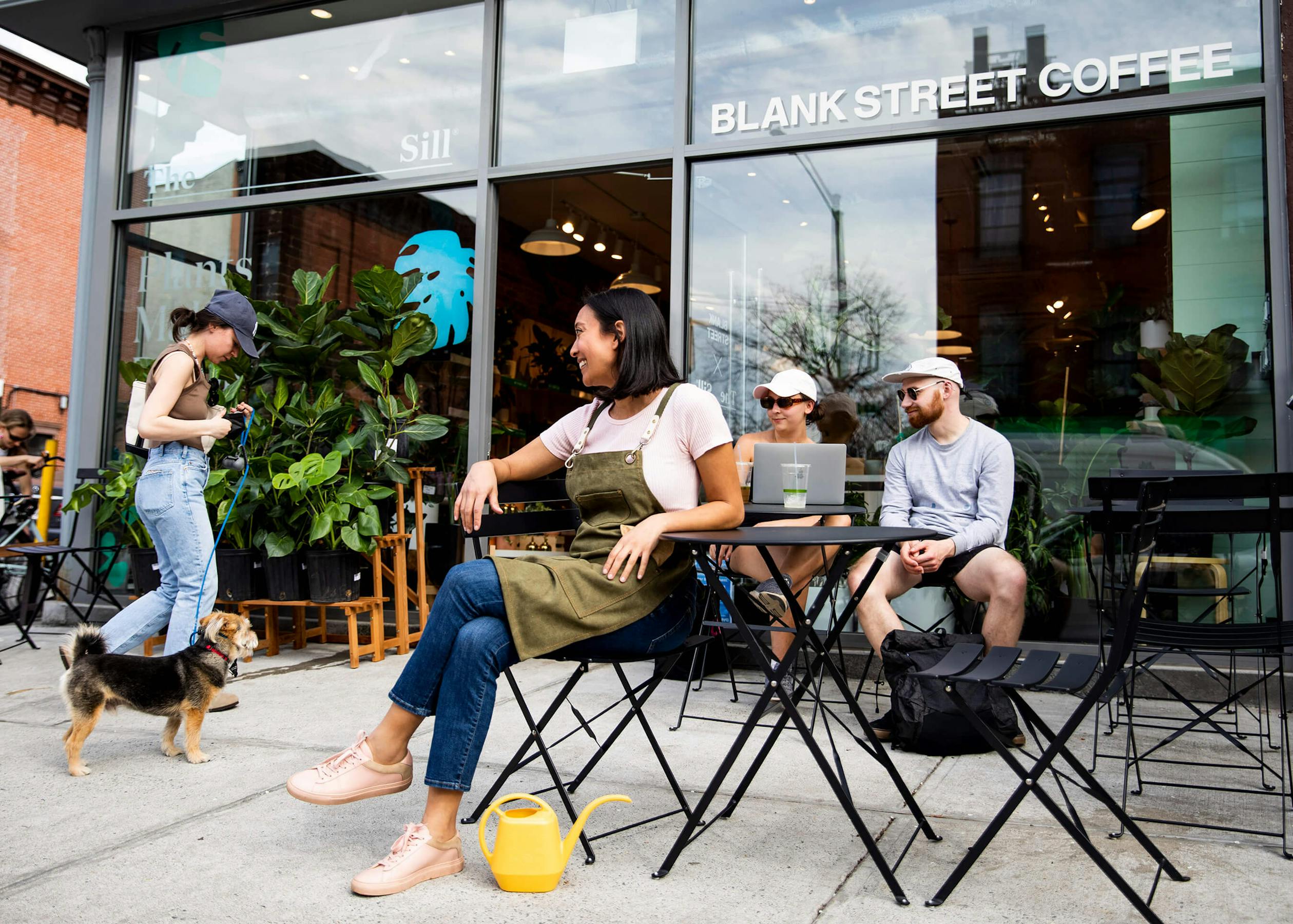
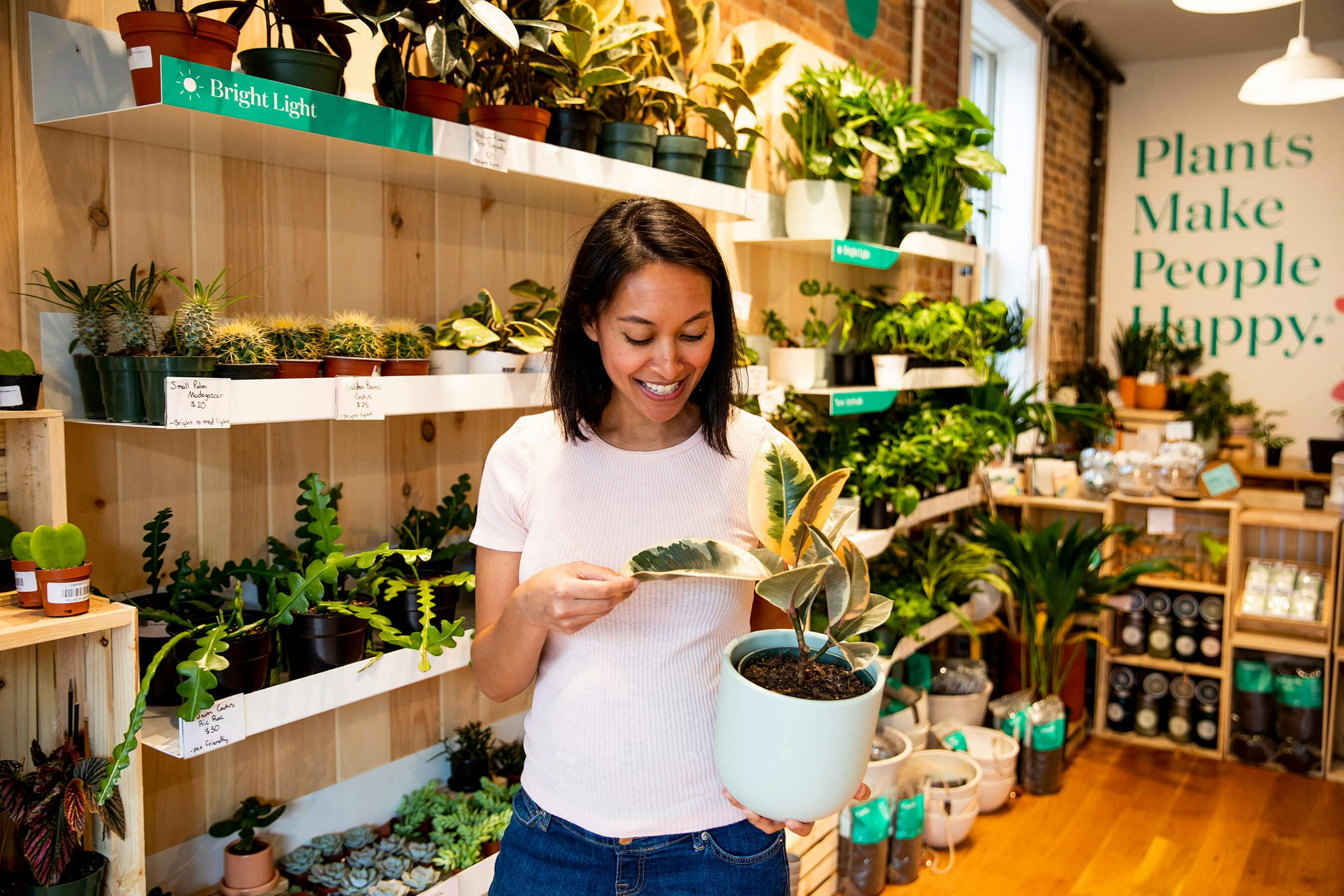
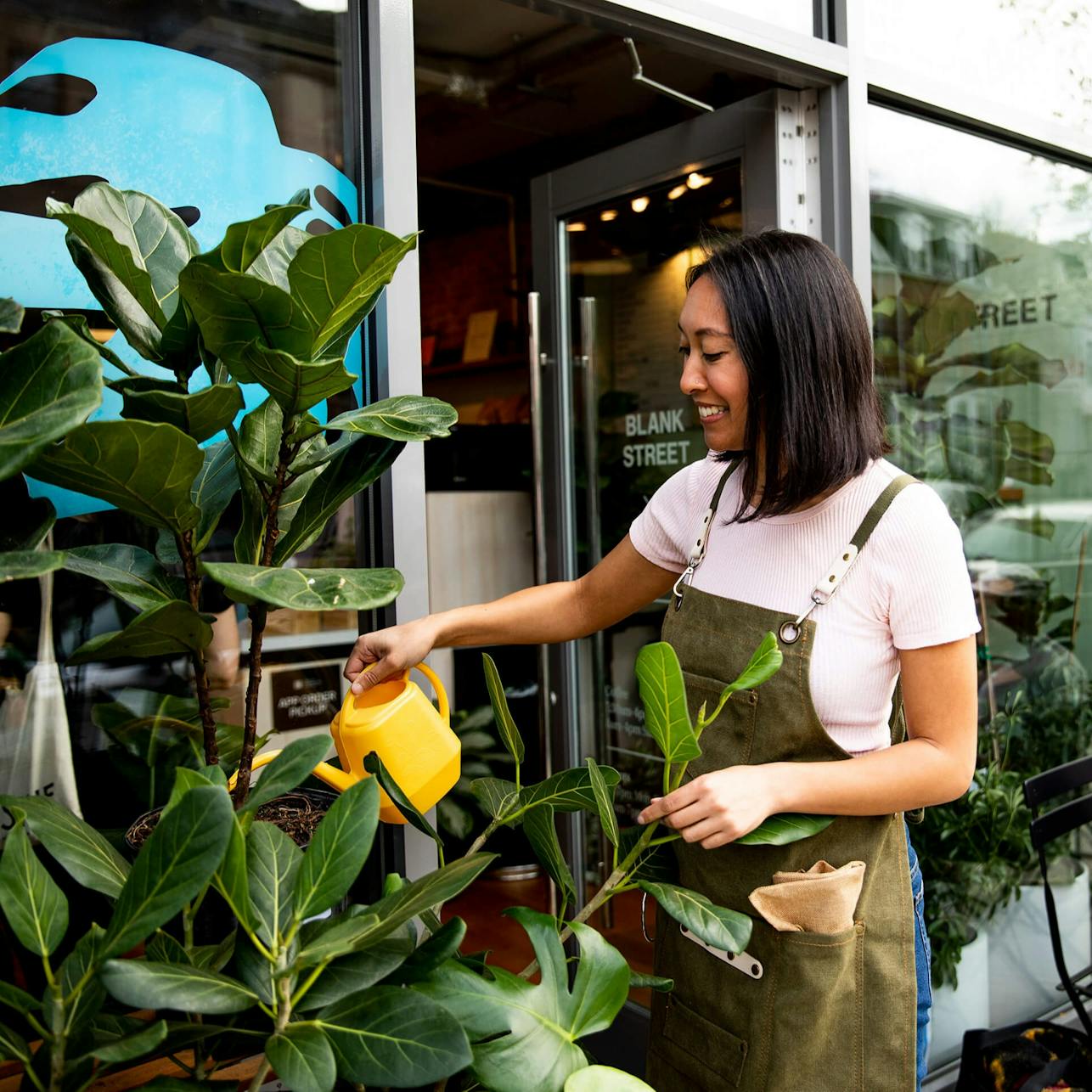
”Plants make people happy” was our tagline from day one. I was having a conversation with my brother and letting him read our first About Us page. The phrase “plants make people happy” was tucked into the middle of a paragraph somewhere. I have this recollection of sitting at a table with him, watching him read it and then point to it and say, “That's it. That's your tagline. That's everything you stand for.”
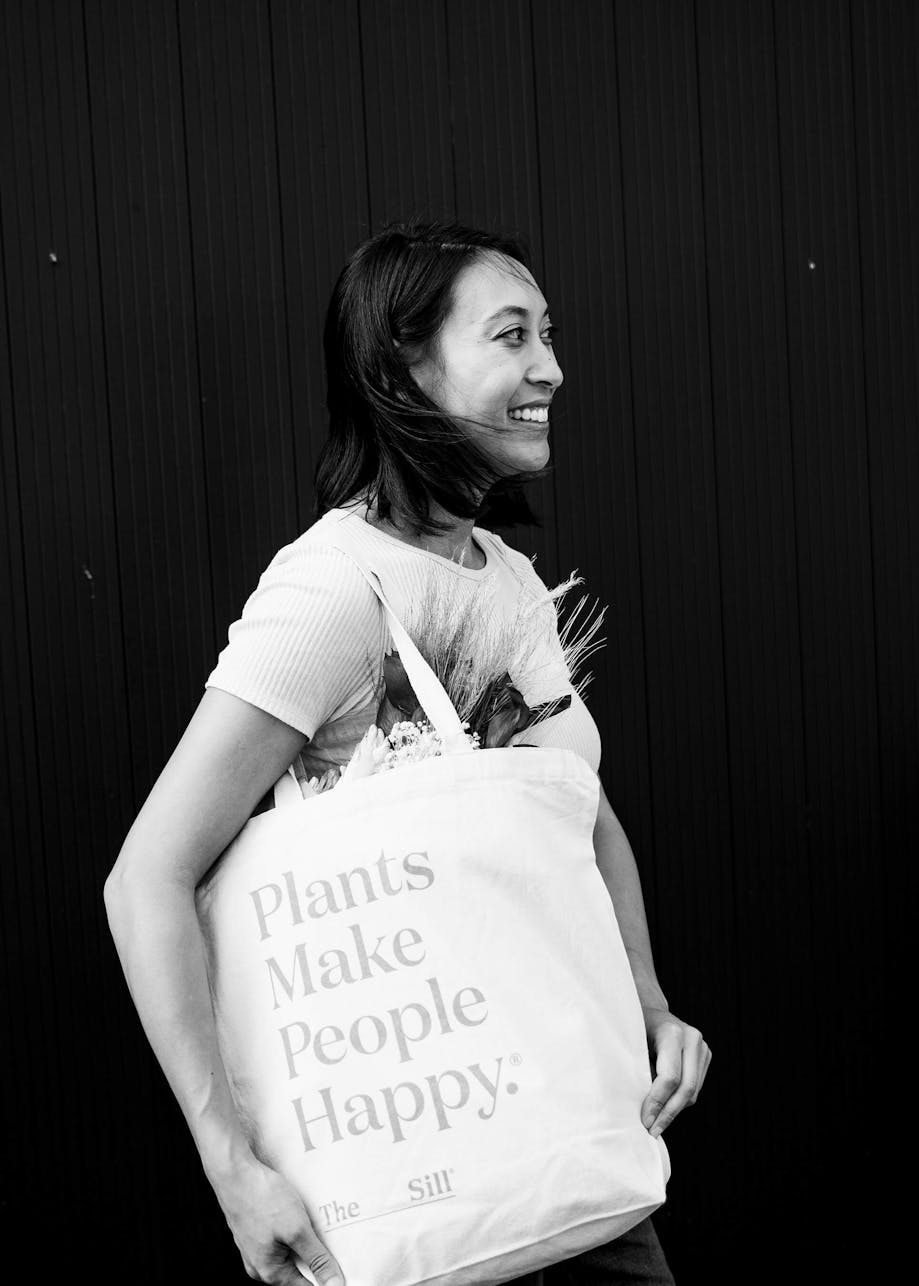
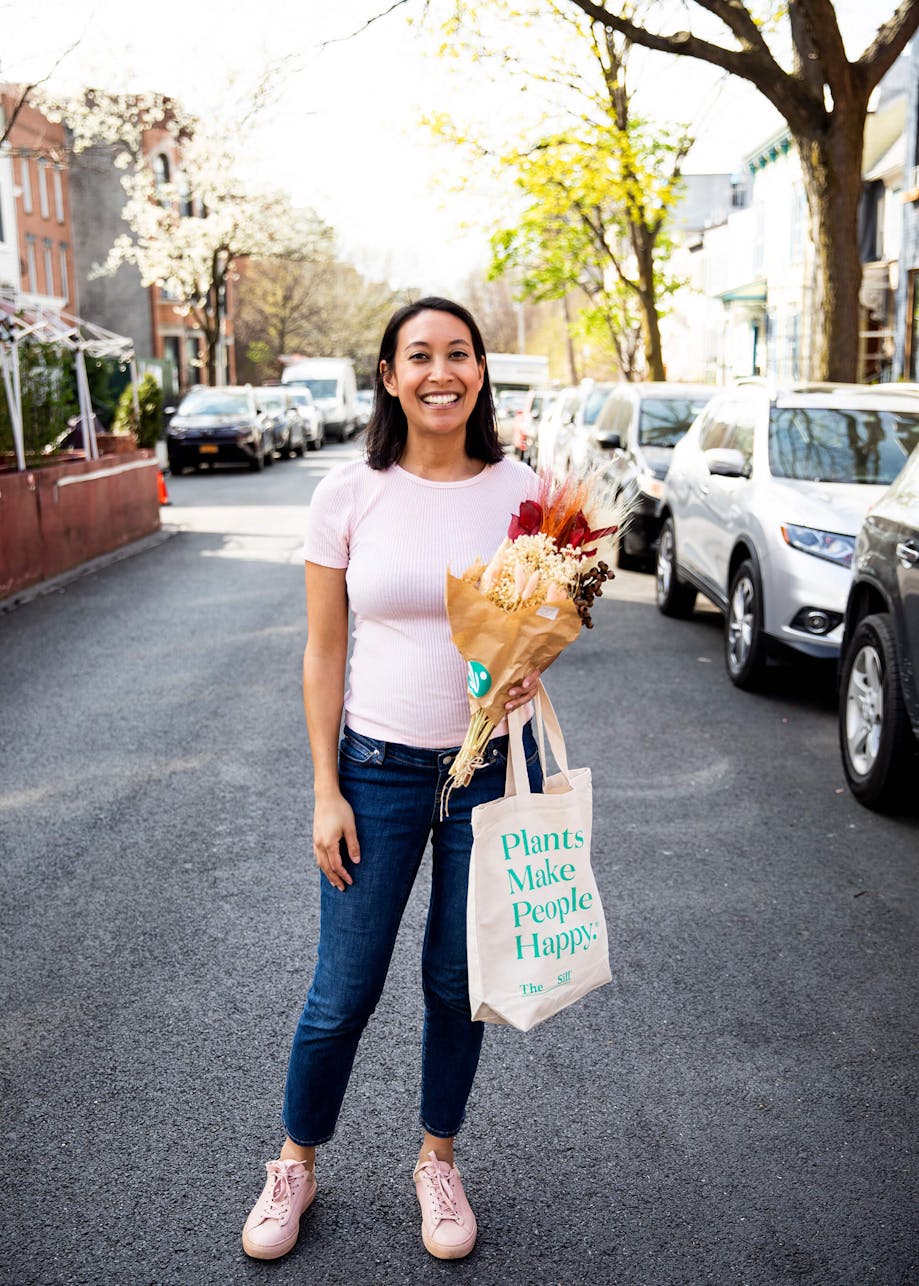
Part of what we were trying to solve for in the beginning ten years ago was around modernization and convenience. Now, everything's convenient and everything's modern, and it's less novel to deliver on those value propositions.
Now we're able to get much more into the emotional connection of the category, moving up in Maslow's hierarchy of needs. We don’t just make plants easy. We inspire you to incorporate nature into your life, and we believe that nature helps mitigate stress, disease, emotional distress, and everything that we cope with, especially now.
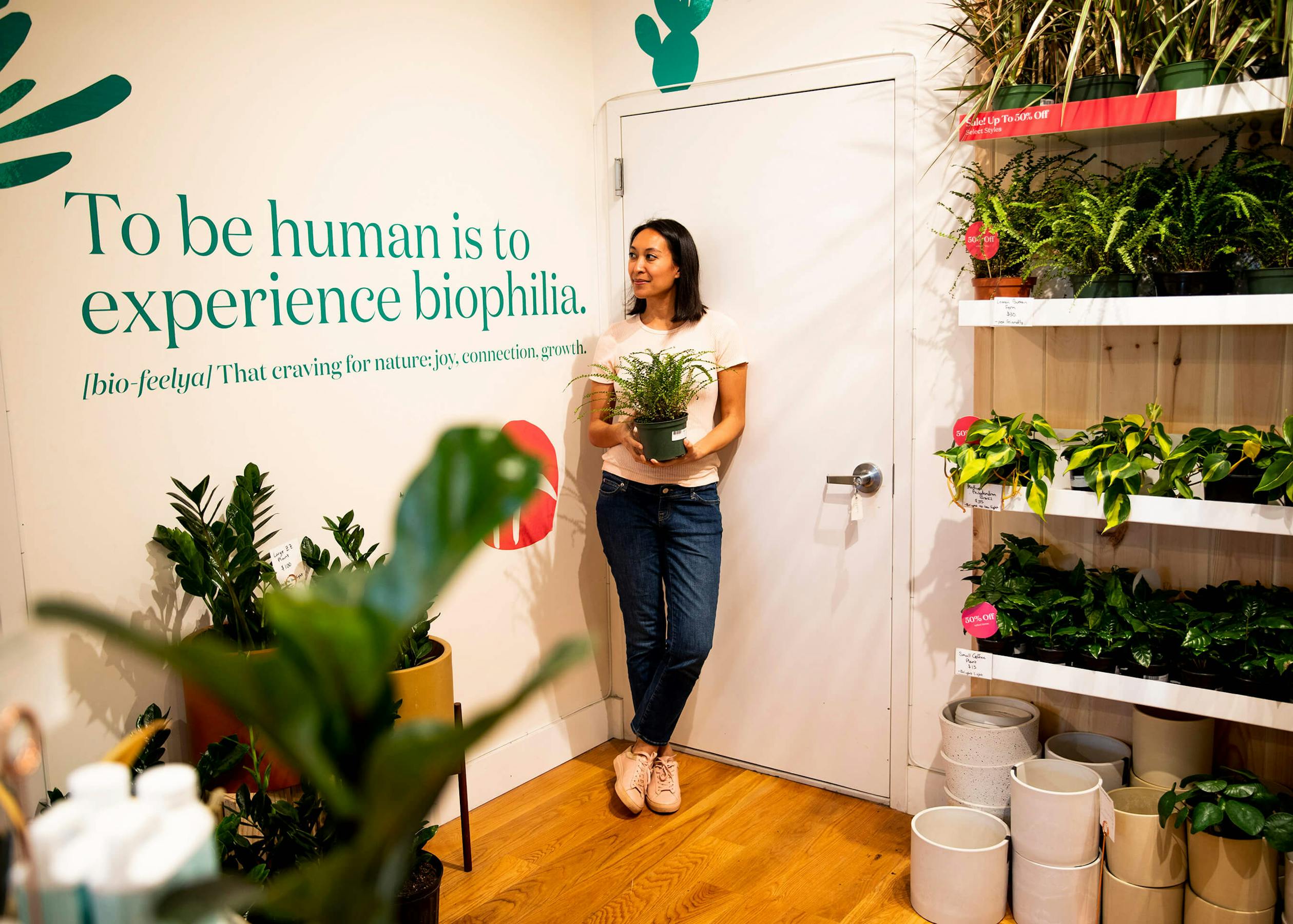
From bootstrapping to building a national brand
Building this business was very intuitive to me, and it instantly resonated with people, which allowed me to bootstrap for the first five years. People just wanted to buy the product, so I didn't need to raise money right off the bat.
Bootstrapping forced me to find product-market fit right away. It forced me to listen to my customers early and to really create something that people wanted and valued. Money can cloud that, because you can acquire early customers with the right ads or with beautiful creative. But the reality is, I didn't have any of those advantages. I was basically like, “Here's my product. Do you like it?”
It also created a foundational DNA of this business that we are good stewards of capital. I think that helped me find some really critical first hires. It also helped us become proficient in marketing. It allowed us to invest the dollars we did have into the infrastructure we needed to sell live plants, which, as you can imagine, is not an easy thing to crack. But we started scrappy. We never tried to overextend ourselves with marketing and advertising. We've just been trying to create as much as we can, as organically as possible, and be really good at it.

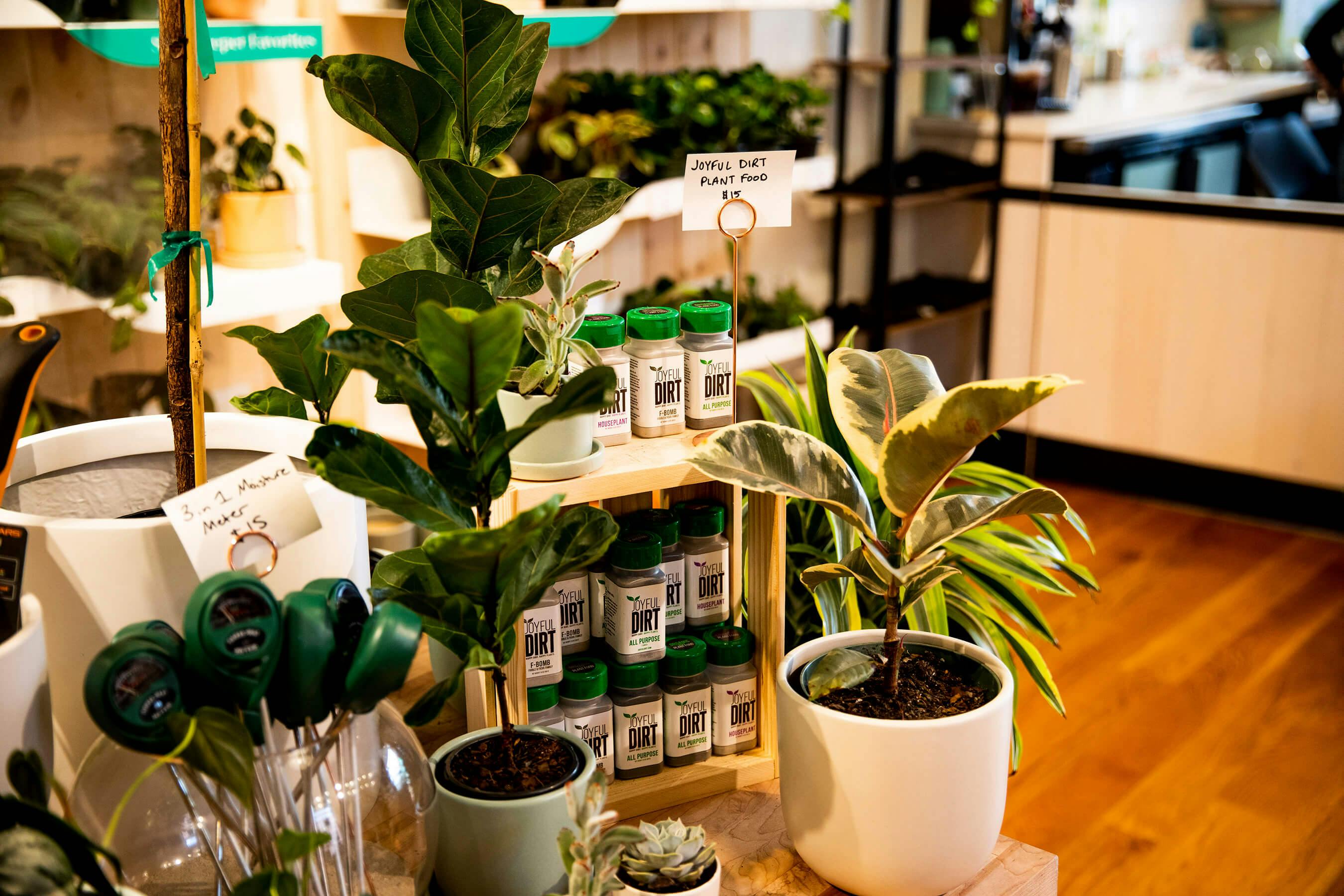

Right now, The Sill is at an inflection point. In a lot of ways, I think people look at us and think: Wow, you’re big and you're successful. But we've meandered to get here. We've tried a lot of different things, and the world has changed a lot. I've changed a lot. We’re about to scale this business in a way that I don't think I anticipated scaling it initially, in a much more omnichannel sense than we ever would've considered before.
It’s about creating a sense of seamlessness between all of the channels that people can possibly use to shop — they can shop through social, they can shop through text, they can shop on our website for local delivery, or they can shop at our stores. It's about creating a platform and an environment where channel attribution doesn't even matter anymore.
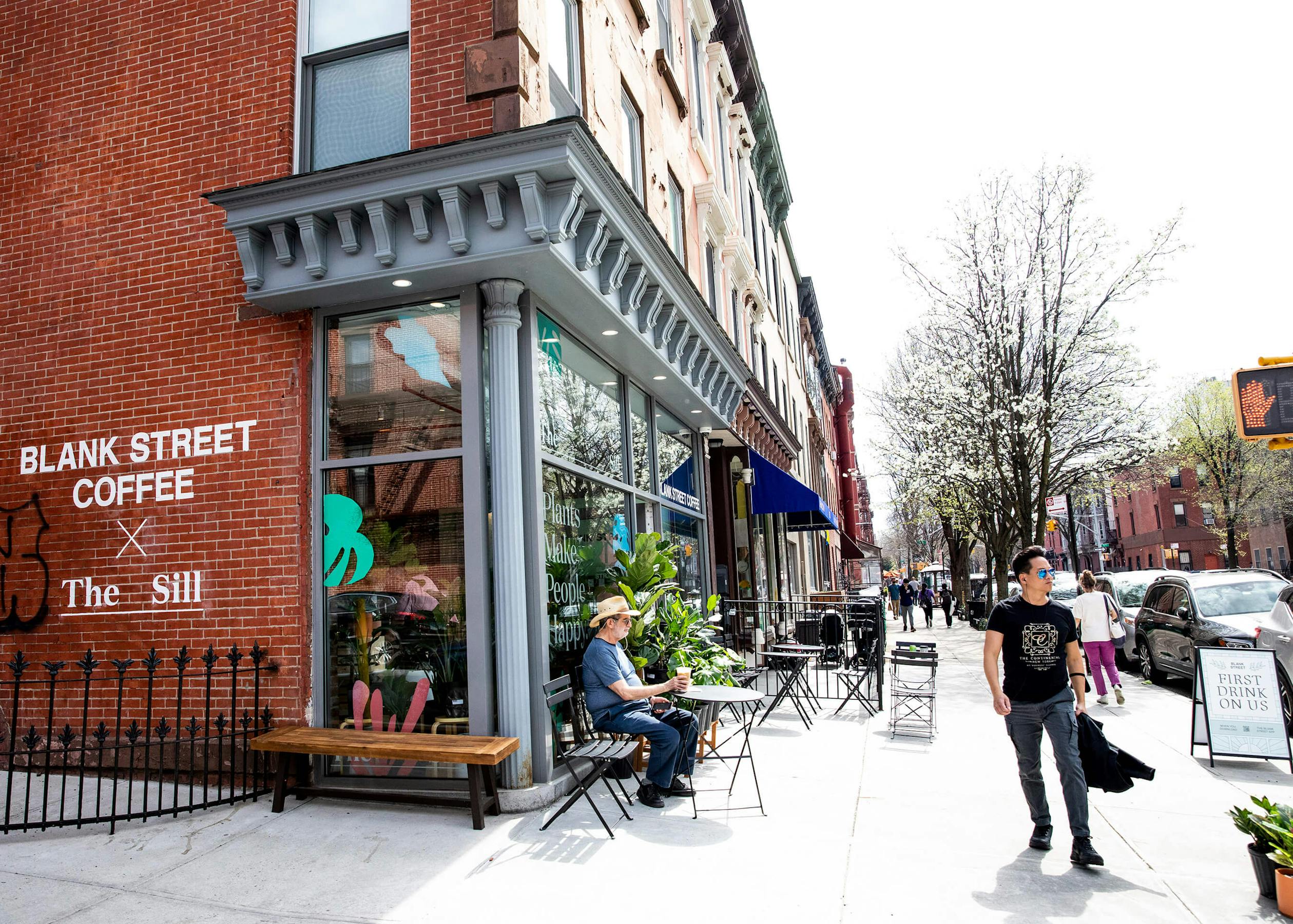
We have nine stores today, five of which are in our home turf of New York, where the business started. My first two stores were in New York City, but my third and fourth stores were in California. That demonstrated that this wasn't just a regional business — we were building a national brand. We’ve also opened stores in Chicago and Boston.
Most recently, we opened another store in New York in partnership with Blank Street Coffee. You walk in and you have plants on the left and a coffee bar on the right in one space, and it's such a great environment to be in.

Plants are for the people: The power of community
Community is a pillar of the brand. There’s commerce, which of course is the selling of the plants. There's content, which is the education aspect. Then there’s community — a critical piece. Historically, gardening as a category has always had community, but it felt out of reach to me and many others. When I got into plants and I started looking for a community, there was pretty much just the horticultural society. And I remember thinking, “Surely I'm not ready for that — I'm still killing my very basic house plants.”
(By the way, I still went to the horticultural society meetings just to scope them out, and plant people are nice people so everyone was warm and inviting.)
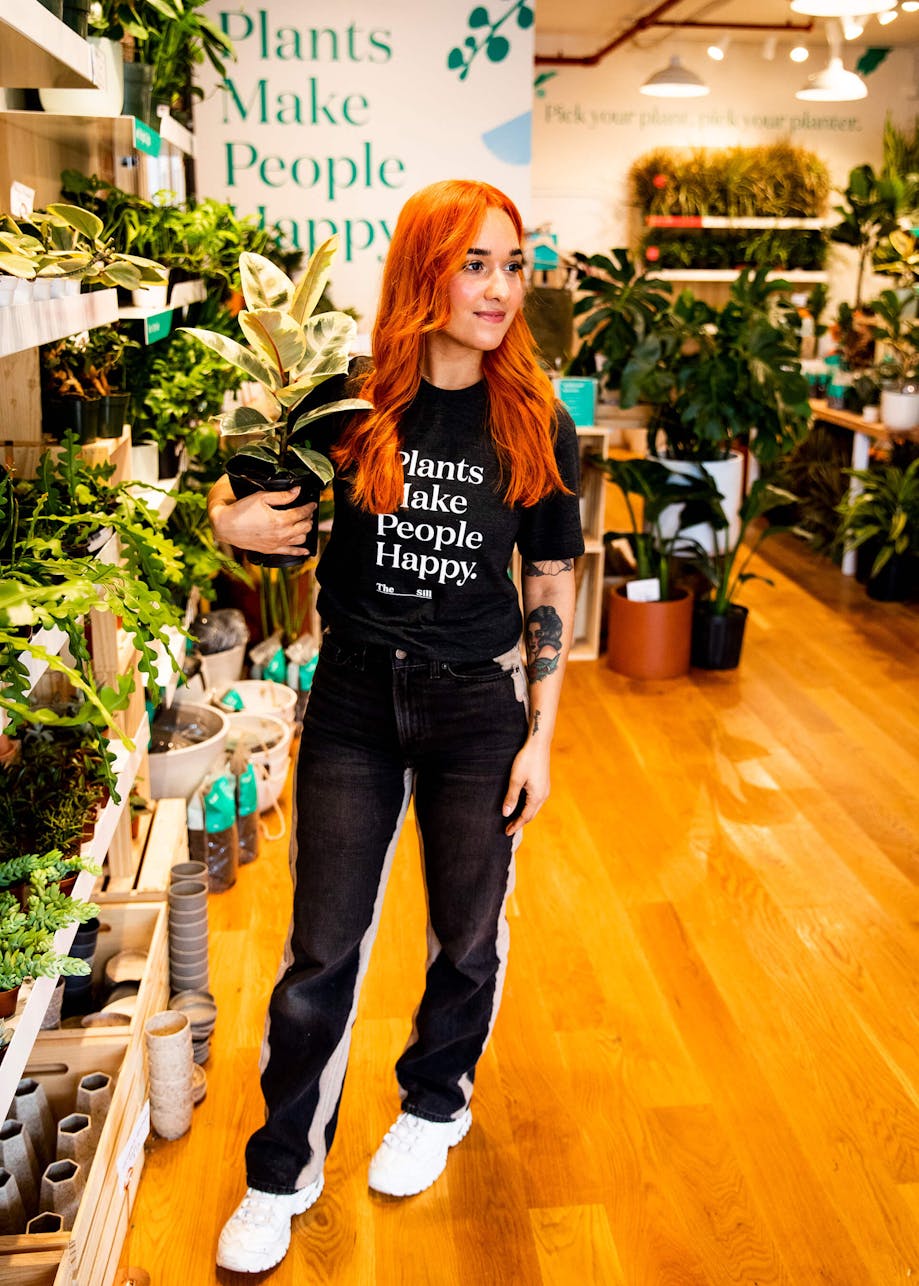
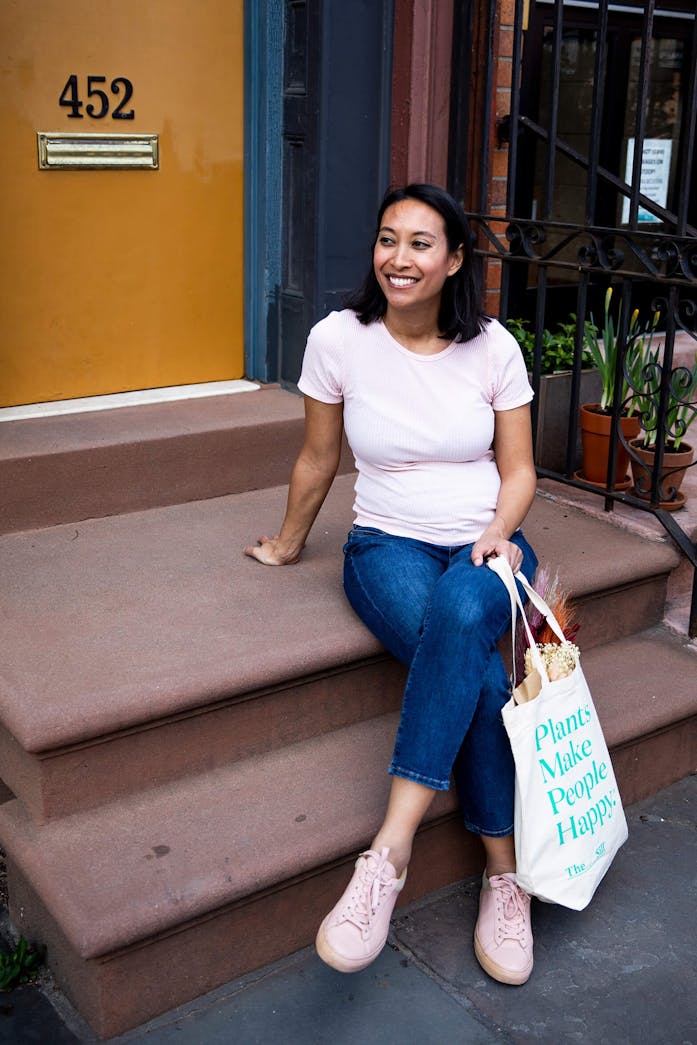
On the other hand, you have someone like Martha Stewart, who is the figurehead of all things home and garden. But again, I was killing plants in my apartment. I don't have a rose and dahlia garden on a giant estate. That's not me either. For me to make plants approachable, it couldn't just be through the product and education. There had to be a third component of finding your people who were also at the beginning — learning and excited and anxious about all of it.
What's been really beautiful over the years of running this business is that the community itself has shown me plants are for the people.
Plants are for anyone. It doesn’t matter what your background is or what your socioeconomic status is. Everyone loves plants. Everyone deserves to have plants. And it becomes this very powerful connecting force between people. You can start talking to anyone about plants if they're a plant person — and you don't need to have anything else in common.
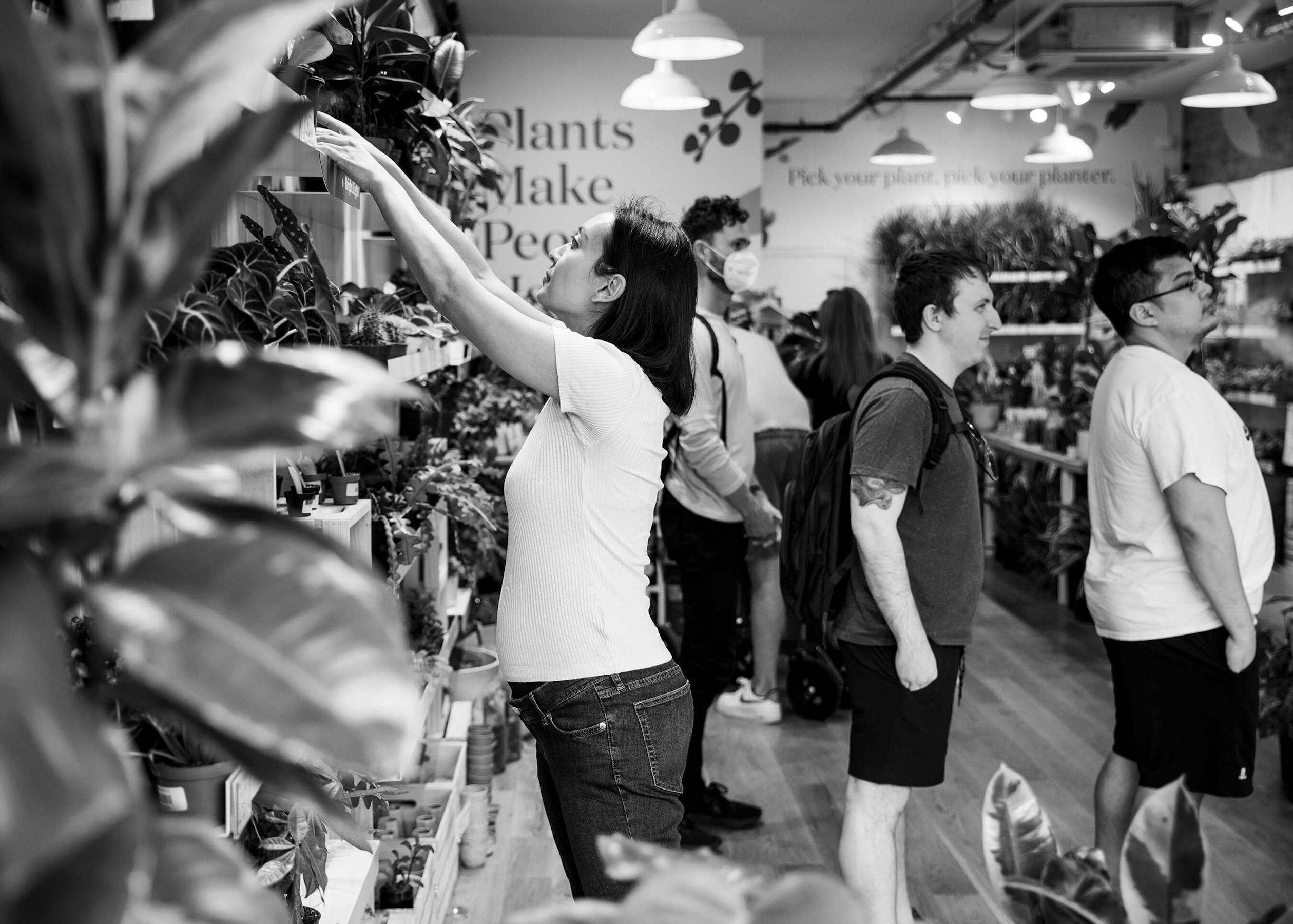
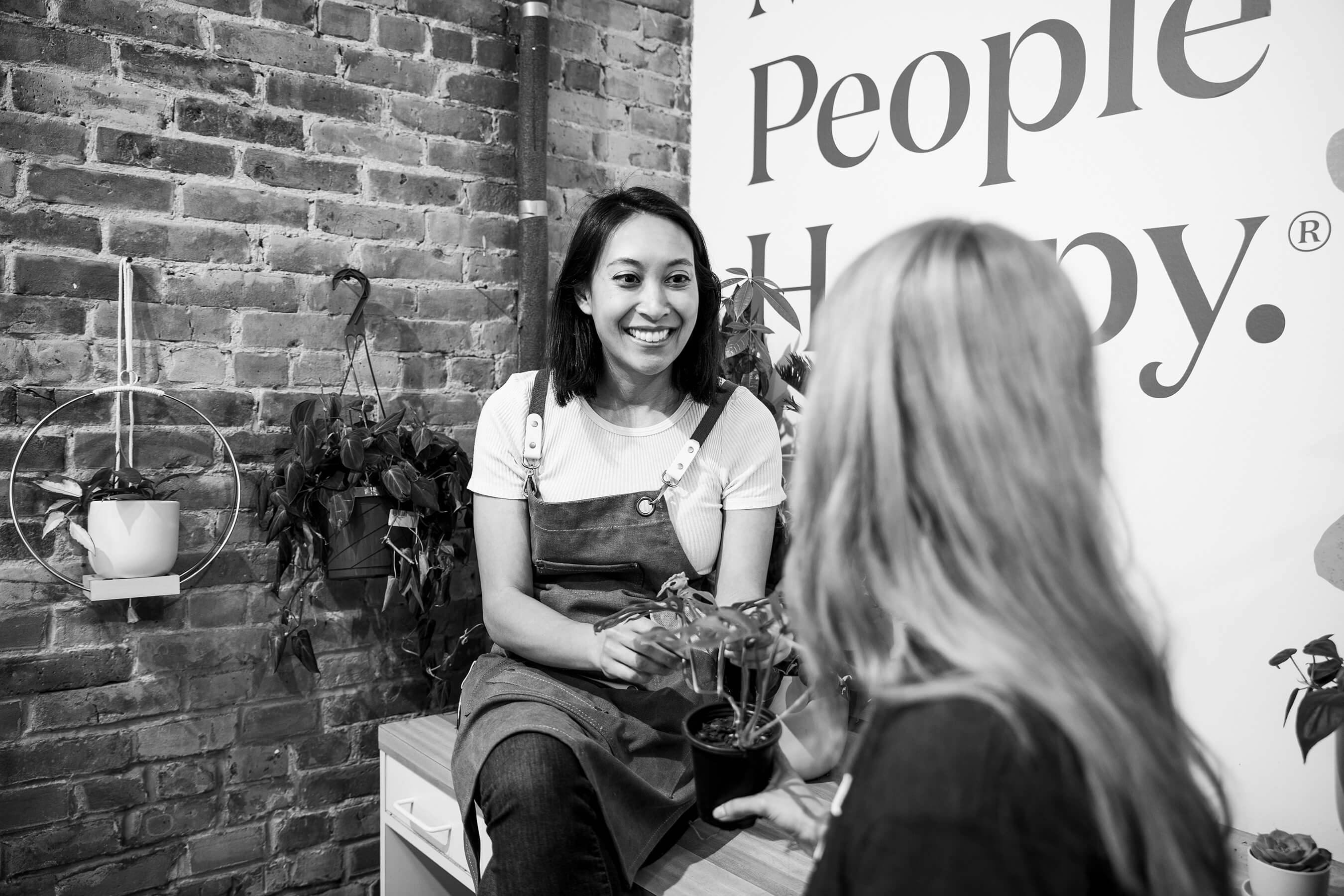
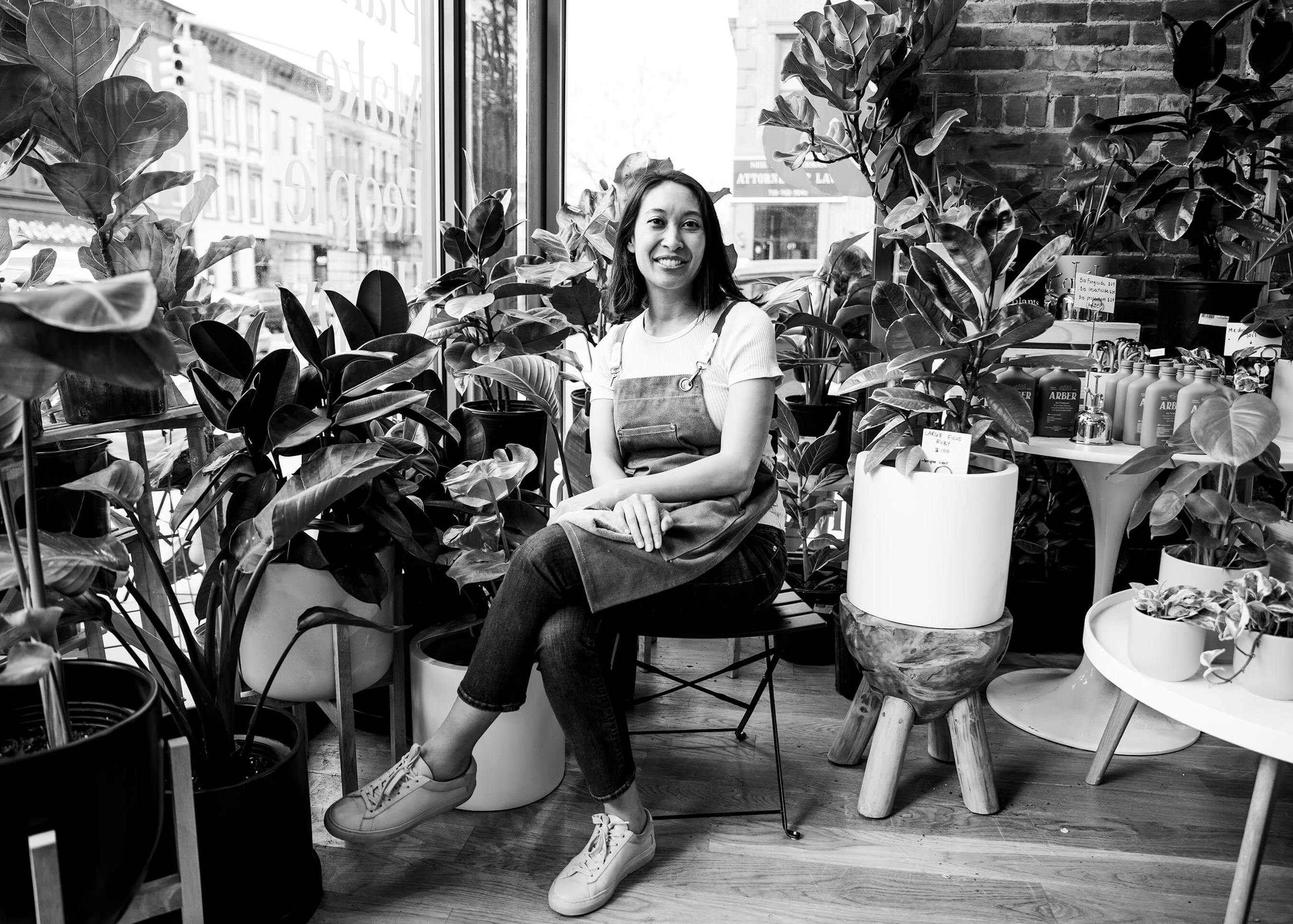
Growing up with The Sill
My role as a founder has certainly changed in response to the growth of the business. When it was just me, I would do everything — I was founder, plant expert, IT department, and janitor. Now I get to just be in my role and work with tremendous people who have expertise in their own roles. I learn a ton every day, which is a really wonderful place to be. I think it's what keeps me so engaged in this business.
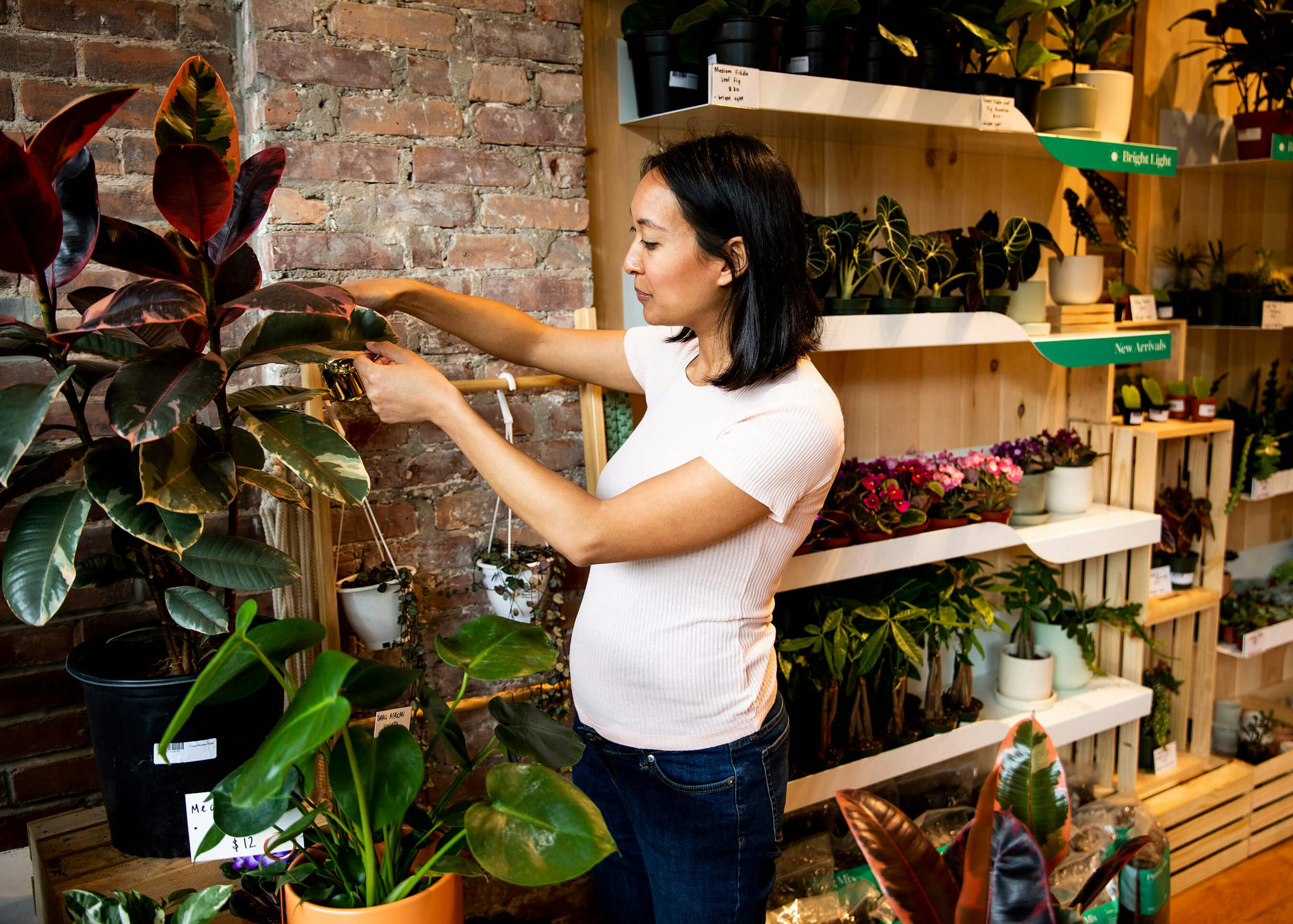
I'm also a mom now. I've been married, I have a three-year-old daughter, and I'm pregnant with my second daughter. That all changed things too — before my daughter was born, I could work around the clock and be perfectly content. Now, that's just not what my life looks like. I have to delegate. I have to create space. On the flip side, I love that my daughter knows I work and she knows that I run this business. She gets to cut the ribbons with me when we open stores.
I would say the headline for me is this: Build a business that aligns with your core values. I know that sounds cheesy, but I don't think I had as good of a grasp on that in the early days. It can become a slippery slope if you don't establish your values and your culture code up front. Because at the end of the day, we work hard as entrepreneurs.
Blooming, and re-blooming
My favorite plant has recently changed. I am in a very strong orchid mood right now, which I would've never said before. When we started selling orchids at The Sill, I got one and remember looking at it and thinking, “I don't know about you.” But I've gotten it to re-bloom three times now. It's on its third season of re-blooming, which brings me so much joy.
In fact, they're not that hard to take care of, and they represent an amazing thing that nature does. Plants can bloom, their blooms can fall, and they go dormant — and then they bloom again.
It turns something that could be unremarkable into something completely remarkable.
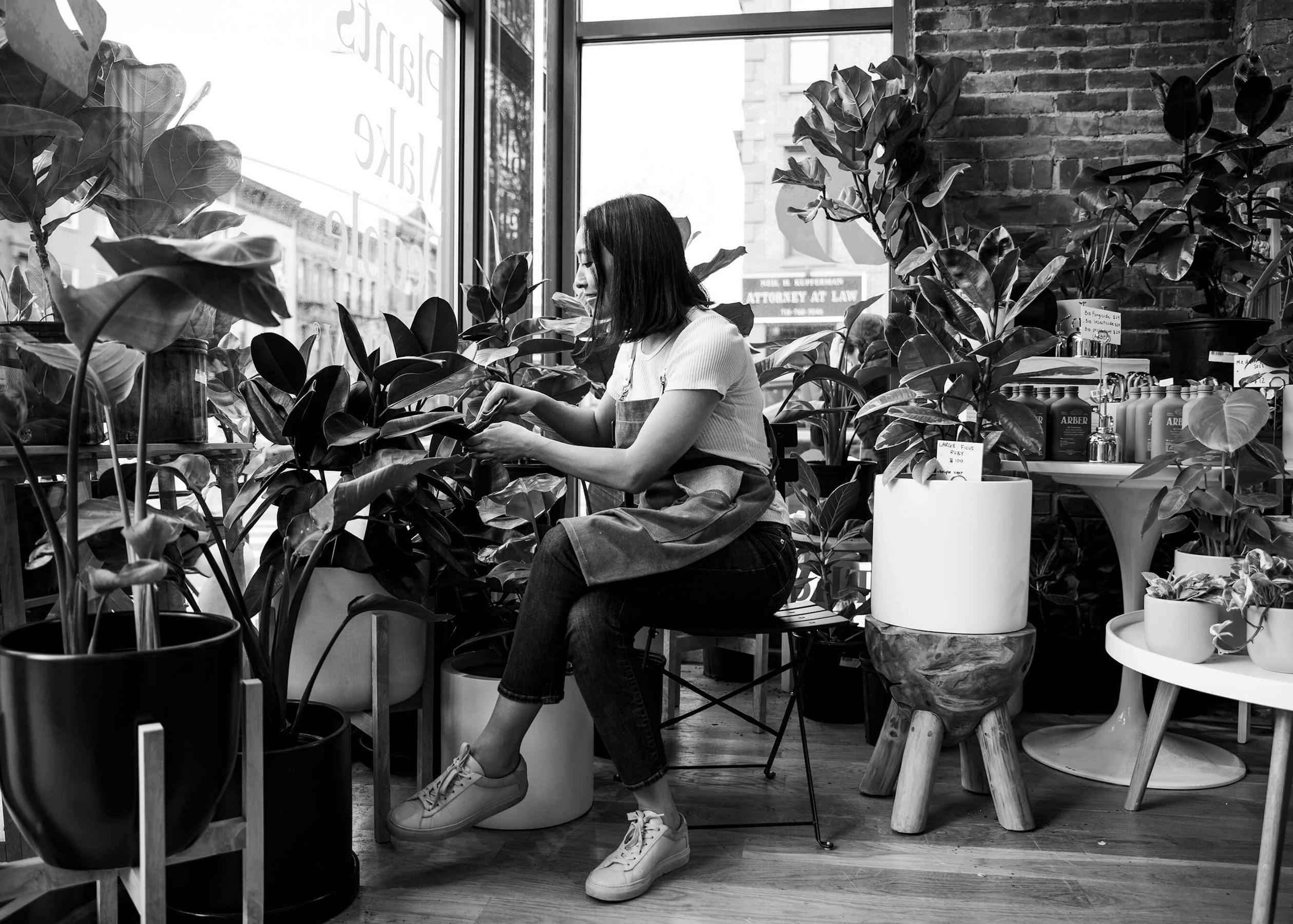
Photography by Hannah Cohen


